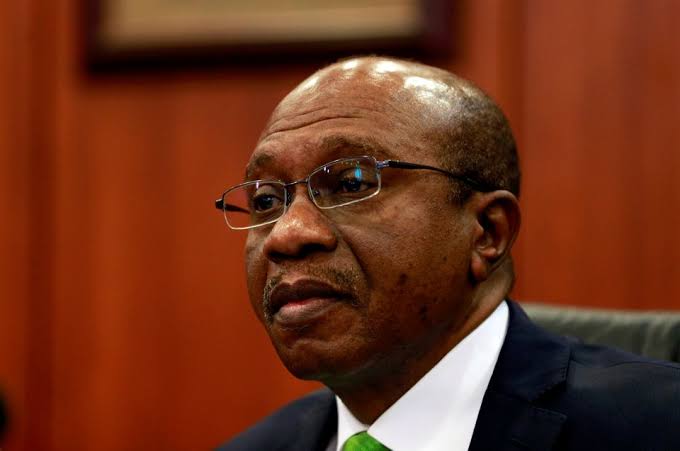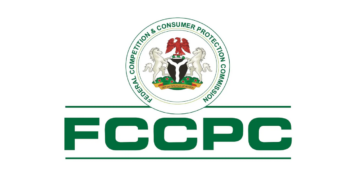I was at a forum recently where concerns about the Central Bank of Nigeria’s development finance interventions were raised. A few stakeholders at the forum appeared to have some understanding of the nature and essence of the interventions and hence expressed support for them. But many others apparently did not. This group was very critical of the interventions, questioning the legality, rationale and impact, apparently seeing no value in the interventions.
Indeed, one critic reasoned that through the development finance interventions, the CBN had taken over the Fiscal Authority’s functions or veered away from its primary mandate of monetary and price stability. He then urged the Bank to stick to its monetary policy functions. In this piece, I seek to throw light on these issues and to state up front that the development finance interventions are founded on theory and law, are supportive of monetary policy objectives, complement fiscal policy and have been impactful. The significance of the interventions must be appreciated against the backdrop of the two recessions experienced by the country in 2016 and 2020.
But for the development finance and associated interventions, especially in agriculture through the star Anchor Borrowers Programme (ABP), the story of Nigeria’s exit from recession and the accompanying recovery would have been different – more prolonged and deeper recession and weaker recovery with implications for unemployment and the poverty situation. They were helpful in sustaining the positive growth rates achieved after the recessions. Consequently, the interventions cannot be described as a drain pipe through which the Bank shares free money to individuals/organisations. At this point in time, if the CBN gets hooked to an undiluted conservative approach to central banking, the negative impact on the economy may be better imagined.
Development finance interventions are elements of heterodox/unconventional monetary policies. They derive from the developmentalist school of the heterodox economic thought. In practice, they do not substitute for orthodox policies. And so, in Nigeria, it is not a question of CBN, through the development finance interventions, upstaging the fiscal authority. Rather, they have complemented orthodox policies in order to achieve desired macroeconomic and development goals. Often they are resorted to because of the failure/ineffectiveness of orthodox policies.
Unconventional policies have been deployed in both advanced and developing economies since the 2007 – 2008 global financial crisis up to the recessions in 2016 and 2020 induced by oil market collapse and covid-19, respectively. Developing countries with constrained fiscal capacity have had cause to use them also. In Nigeria, the development finance interventions, aimed at making credit available at affordable interest rates to priority real sectors of the economy, are founded on Section 31 of the CBN’s Act, 2007 which provides for the performance of development functions by the Bank. Also, in the context of a developing economy, the interventions are within the purview of the lender of last resort function of the Bank.
On the assertion that the Bank has taken over the fiscal authority’s functions, it may seem so to some people considering the scope of some of the interventions, but it is not the case as the interventions are targeted and complementary. The Bank has had to provide development finance to complement the efforts of the fiscal authority to save the economy from the negative impact of unprecedented internal and external shocks. Every honest observer will concede that Nigeria has experienced serious fiscal and economic challenges including stagflation in the past nine years amid occasional respites; these have challenged monetary policy and undermined desired growth of the economy. It is one reason that the Bank, in complementing the efforts of the Federal Government, has used the strategy of development finance interventions in the key real sectors to impact growth, employment, poverty reduction, external reserves as well as tackle inflation from the aggregate supply side through increases in the outputs of goods and services produced by the sectors that benefit from its interventions. Indeed, it can be confidently argued that without the interventions, the fate of the economy would probably have been worse. This is not to state that the interventions have not had some challenges.
This leads me to the question of the relationship between the development finance interventions and monetary policy. Some analysts erroneously believe that the CBN’s development finance interventions have no bearing with monetary policy. And that the Bank should not dabble into fiscal policy (spending) issues but should rather carry out its monetary policy function through the use of orthodox monetary policy tools, as contained in the CBN Act 2007 (monetary policy rate, cash reserve requirements, liquidity ratio, special deposits, open market operations, etc), to ensure price and exchange rate stability. Yes, these instruments could work under normal circumstances. But under the economic circumstances of two recessions, stagflation and very limited fiscal space, they were not in the position to stimulate the economy out of recession and generate income and employment. Neither were the orthodox policy instruments also in the position to effectively ensure price and exchange rate stability as well as contribute to growth/employment at the same time. Hence, development finance initiatives had to fill the gap.
Now, what is the channel of impact of the development finance interventions on monetary policy goals? It is through the output or aggregate supply side. Price inflation can be controlled through the demand or supply side or both while exchange rate stability can also be achieved through the demand or supply side or both of foreign exchange. The development finance interventions work mostly on increasing the supply of goods and services through making credit available to investors and producers of goods and services at affordable single digit interest rates; this is implemented largely through the commercial and microfinance banks and development finance institutions such as the Bank of Industry and the target is increased production of goods and services either for domestic consumption or exports or both. Increased production of domestically consumed goods and services should, other things being equal, lead to reduced inflation and reduction in demand for foreign exchange for importation of goods and services, hence saving foreign exchange.
On the other hand, increased production of export goods is expected to boost foreign exchange earnings from non-oil exports with positive impact on external reserves and exchange rate stability. A high level of external reserves is a pre-requisite for exchange rate stability. Thus, most of the interventions are in line with the Bank’s mandate.
A close look at the various development finance initiatives of the Bank show that they have laudable objectives, they are relevant to the Bank’s mandate and have made notable impact under a hardly conducive economic environment.
In light of the progressive nature of Nigeria’s central banking, the development finance interventions straddle the following broad sectors: Agriculture; Micro, Small and Medium Enterprises (MSMEs); Manufacturing; Energy and Infrastructure; Health and Export. The cumulative disbursements on the seven broad sectors from 2009 to February, 2022 stood at N8.27 trillion with manufacturing, energy/infrastructure and agriculture accounting for the highest shares. For maximum impact, a number of specific initiatives are to be found in each sector. However, for the purpose of illustration only a few are highlighted here including the The Anchor Borrowers Programme (ABP) and Export Development Facility (EDF). Some initiatives aim at boosting domestic production, non-oil exports, foreign exchange supply and economic diversification while others support the Bank’s mandate directly or indirectly.
The Anchor Borrowers Programme (ABP) was introduced to boost local production of key agricultural commodities in order to reduce food importation and conserve foreign exchange. The programme also helps in reducing the demand pressure in the foreign exchange market by importers of these agricultural products thereby contributing to naira exchange rate stability just as increased agricultural output aids price stability. As at early 2022, the Programme had disbursed N948 billion to 4,478,381 smallholder farmers who cultivated 5.2 million hectares of farmland across the country, thereby creating 12.5 million direct and indirect jobs. Importation of rice has significantly reduced just as the associated foreign exchange demand. The Programme has significantly boosted job creation and economic diversification.
The Export Development Facility (EDF) was introduced by the Nigerian Export – Import Bank (NEXIM) from the CBN investment in a 100 billion Debenture issued by NEXIM to stimulate and increase funding, especially to Small and Medium Enterprises (SMEs), towards facilitating regional industrialization for value added exports and broadening Nigeria’s export basket and market destinations. During the period, 100.00 billion was disbursed under the EDF. The Facility also supported sub-nationals’ export development initiatives across the country.
The Real Sector Support Facility (RSSF), implemented through the Differentiated Cash Reserves Requirement (DCRR), is a funding window that was introduced to further improve access to affordable, long-term finance in the manufacturing, agricultural and other highly employment-elastic and growth-stimulating sectors. During the period, 1.32 trillion was disbursed under the scheme. 226 growth-impact and employment-elastic projects were financed across the real sector – manufacturing, agriculture, services and construction. About 10,100 direct and indirect jobs were created.
The Micro, Small and Medium Enterprises Development Fund (MSMEDF) was established to cater for the financing needs of the micro, small and medium enterprises. The objectives include provision of cheap wholesale funds, deepening access to finance, job creation and grassroots economic development. An amount of 96.09 billion was disbursed under the MSMEDF with 749 MSME projects supported nationwide. Besides, 216,706 direct and indirect jobs were created across the country while 55,422 budding entrepreneurs were trained.
The Non-Oil Export Stimulation Facility (NESF) was introduced to increase access by export-oriented firms to low-interest financing towards diversifying the revenue base of the economy and expedite the growth and development of the non-oil export sector. 47.89 billion was disbursed under the NESF to 15 export-oriented projects with the objective of helping to diversify the foreign exchange revenue base of the economy.
The 100 for 100 Policy on Production and Productivity (100 for 100 PPP) was introduced to catalyse and transform the productive base of Nigeria’s economy and reduce the country’s over dependence on import for food and raw materials. 29.51 billion was disbursed under the 100 for 100 PPP to 37 real sector projects in agriculture, health, and manufacturing sector.
Agribusiness/ Small and Medium Enterprises Investment Scheme (AGSMEIS). An initiative of The Bankers’ Committee that aims to support the Federal Government’s efforts and policy measures for the promotion of agri-businesses and small and medium enterprises (SMEs) as vehicles for sustainable economic development and employment generation. 135.58 billion was disbursed under the AGSMEIS while 37,646 agribusiness and artisanal projects were financed across the country. 107,932 direct and indirect jobs were created. Besides other impacts, the initiative boosted the productive capacity of the domestic equipment fabrication industry across the country.
In a nutshell, the interventions have positively impacted the Nigerian economy in many spheres: national output and productivity; employment and poverty reduction; and not least, foreign exchange earnings and foreign exchange conservation, and hence contributing towards achievement of the Bank’s primary mandate of price and exchange rate stability.
Against the backdrop of the Federal Government’s relatively weak fiscal position, resulting in little or no fiscal buffers, it is the CBN’s development finance interventions that effectively complemented the Government’s fiscal efforts to keep the economy afloat.
However, it must be admitted that the development finance interventions could have recorded even better performance but for certain challenges that the economy had had to grapple with. Among these are the following:
- Insecurity resulting from armed banditry and insurgency in different parts of the country, especially in the food-producing areas, and the effects on food security and prices;
- Unfriendly economic environment resulting in high mortality of MSMEs;
- Climate change and extended/uncontrolled rainfall;
- Economic crisis-induced macroeconomic uncertainties;
- Increased credit risk arising from side-selling and diversion of facility by obligors.
Most of these problems are external to the Bank but those within its purview are being addressed through necessary reforms, for example, relating to credit risk due to side-selling and diversion of facility by obligors and repayment of ABP loans with output rather than cash.
Finally, no doubt, some analysts would prefer that the CBN disengages from development finance initiatives in the belief that injection of liquidity into the economy is responsible for the current high inflation. This is not quite so to the extent that the injections are mostly real sector/output-targeted and many non-monetary factors have been the major drivers of the inflation. Importantly, under the present circumstances of un-abating fiscal challenges of the government, the Central Bank may have to continue with the interventions at a reduced pace and continue to complement the efforts of the fiscal authority in the sphere of growth and development. For maximum impact, however, effective monitoring of the initiatives and programmes as well as undertaking periodic impact assessment is of the essence.
* Mike Idi Obadan is a Professor of Economics, Chairman, Goldmark Education Academy, Benin City and formerly the Director-General, National Centre for Economic Management & Administration, Ibadan, Nigeria. E-mail: [email protected].





